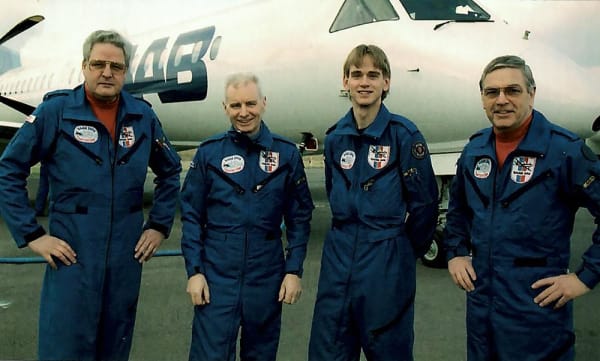Saab 2000 - 30 year anniversary - Happy "First Flight Day"!
On this day, the 26th of March 1992, a new ground breaking turboprop aircraft took to the skies for the very first time. The Saab 2000 was well ahead of its time and is still outperforming its modern day competitors. The outstanding performance and comfort is most certainly the main reason why it’s still so vastly popular out there. Since 1993, it still holds the world record in climb performance for twin engine turboprop aircraft. This is a short version of the Saab 2000 success story.
This was in the end of 1988 and Saab officially announced the launch of the Saab 2000 project. The aircraft was designed using the new CATIA CAD software which was symptomatic for this futuristic aircraft, way ahead of its time. With all the new features and exceptional performance, the aircraft evolved into such a different bird that it could no longer be called a stretched Saab 340, it was a completely new aircraft.
The first flight was successfully performed 26 March 1992 by the pilots Eric Sjöberg and Lennart Nordh. Flight test engineers were Sture Rodling and Anders Bergstrand.

- “It was an experience of a life time for a young test engineer as myself. Opportunities like this are rare and I feel privileged to have been part of it” says Anders, still working at Saab as a Flight Test Engineer but now with an additional 30 years of experience in his resume.
During the flight test period it became clear that there was a problem as a result of the powerful Allison engines and large six-bladed Dowty composite propellers. The air flow over the horizontal stabilizer showed to have significant impact on the mechanical elevator control system (MECS) and hence the stick forces. Several different configurations were tried out and it got better and better, but not good enough for Saab.
This particular problem delayed the program but after finally achieving certification 31 March 1994, the first six aircraft could be delivered to Crossair with the MECS system installed. Meanwhile Saab had found the solution to the problem and a hydraulic powered elevator control system (PECS) was designed, certified and retro-fitted into the six aircraft and five aircraft still in the production line. Crossair and Moritz Suter were happy and they named the Saab 2000 “Concordino” because of its fantastic speed. In the end Crossair took delivery of 34 Saab 2000 during a period of five years.
The production of the Saab 2000 (as well as the Saab 340) came to an end in 1999 as a result of the extremely overheated market in these segments and also as a result of a changing market which rapidly shifted over to prefer regional jets. When the obvious downside of these aircraft was discovered, namely the bad fuel economics, the market shifted back to turbo-props again but it was too late for the Saab 340/2000, the production had already ended.
In total only 63 Saab 2000 were built and four of these where test aircraft of which three never were delivered to any customer. The main market was in Europe even though it was very close to be certified for passenger traffic in the US when several successful Saab 340 operators considered to buy the Saab 2000. Several operators did however operate the aircraft as corporate or non-commercial and among these a couple of Nascar teams and General Motors corporate flight, and eventually it was certified for commercial traffic in the US as well. The Saab 2000 has been operated by 48 operators in 22 countries and it still has a long and healthy life ahead.